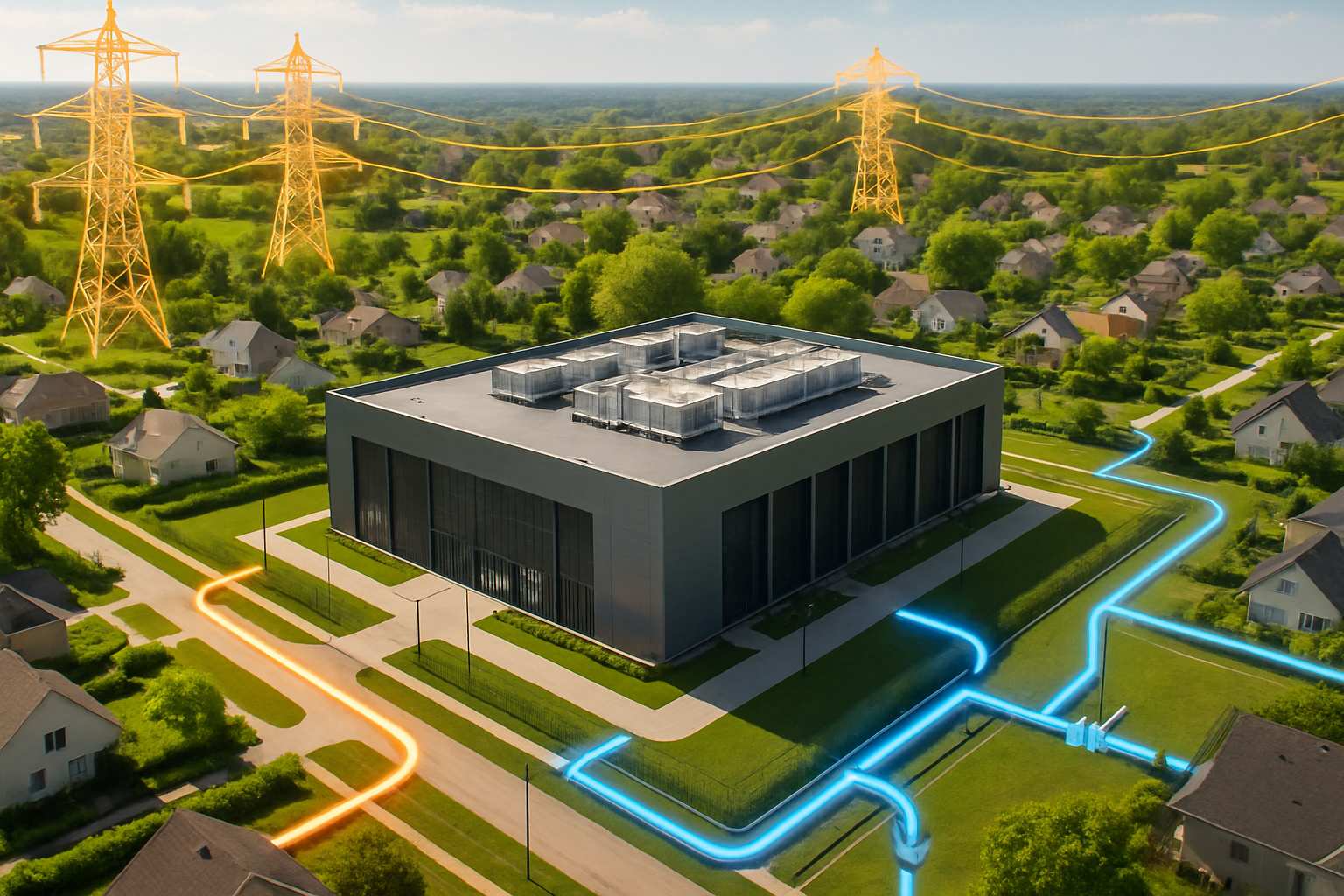
AI CERTS
22 hours ago
Springdale Data Center Plan Faces Growing Resident Opposition
Consequently, borough officials face intense scrutiny during ongoing conditional-use hearings. This article unpacks the debate, numbers, and next steps for technical stakeholders. Furthermore, it situates local concerns within national data Infrastructure trends and escalating AI energy demands. Readers will also find certification resources to deepen sector expertise. Therefore, professionals can gauge policy implications and commercial risk before similar projects arrive in other towns.
Former Plant Redevelopment Plan
Allegheny DC Property Company wants to repurpose the retired Cheswick Generating Station into a 565,000-square-foot facility. Moreover, the Data Center requires an additional 200,000-square-foot cooling building to support high-density servers. Developers argue the project revitalizes dormant Infrastructure while avoiding greenfield construction.

These reuse claims appeal to planners seeking industrial recovery. However, opponents challenge whether benefits outweigh new burdens. Consequently, economic promises come under sharper review.
Economic Promises Examined Closely
The developer estimates $420-$770 million in construction spending and up to 1,000 temporary jobs. Additionally, long-term staffing at the Data Center would reach 80–100 specialized positions with salaries above county medians. Annual taxes could add roughly $2.49 million to borough coffers and boost school revenue by 9.5%. Nevertheless, critics note hedge-fund ownership may export profits while delivering limited local hiring.
Fiscal gains appear tangible but concentrated. Meanwhile, social costs remain contested and complex. Environmental concerns now dominate council chambers.
Environmental Impacts Debated Heavily
Primary worries involve constant equipment hum measured at 57 decibels during normal Data Center operations. In contrast, emergency generator testing could spike noise near 75 decibels, approaching urban traffic levels. Furthermore, closed-loop cooling still evaporates water, a scarce regional resource during summer droughts. Community Protest groups, including Protect PT, fear particulate emissions from diesel backups and demolition dust will degrade air quality.
Experts demand transparent monitoring and enforceable thresholds. Therefore, energy dynamics require closer inspection. Attention turns to Grid Power capacity.
Energy Demand Scrutinized Intensely
The Data Center would draw about 180 megawatts, comparable to 150,000 homes, according to local reporting. Moreover, national projections show U.S. data Infrastructure could consume up to 12% of electricity by 2028.
- 180 MW projected load equals 150,000 homes.
- U.S. data centres used 176 TWh in 2023.
- National share could hit 12% by 2028.
Consequently, utilities must reinforce transformers and distribution lines before approving large interconnection agreements. Residents worry increased Grid Power demand will raise rates or prompt fossil generation revivals. Developers counter that existing onsite assets reduce upgrade costs and avoid regional Data Center reliability threats.
Grid studies remain unpublished, fueling skepticism. Nevertheless, the permit process advances. Governance issues now surface.
Regulatory Process Continues Locally
Springdale Planning Commission recommended conditional approval after months of hearings and expert testimony. Subsequently, the Borough Council opened formal hearings on 24 November to assess the Data Center compatibility without casting a final vote yet. Objectors can appeal any approval within thirty days, potentially escalating to county courts. Moreover, the council may impose stricter noise caps, water audits, or real-time power monitoring as conditions.
Local governance still shapes project fate. In contrast, Community Protest intensifies outside the chambers. Future scenarios warrant consideration.
Future Outlook And Considerations
Analysts predict AI workloads will expand, pressuring every Data Center developer to innovate cooling and sourcing. Consequently, professionals can enhance oversight skills through the AI Educator certification when advising Data Center stakeholders. Furthermore, community groups plan continued monitoring of noise, water, and Grid Power impacts. Industry insiders anticipate stricter zoning templates and Infrastructure audits emerging nationwide.
Local decisions will set influential precedents. Therefore, stakeholders should track updates actively. The discussion now turns to overarching conclusions.
Springdale’s deliberations illustrate the complex trade-offs surrounding hyperscale technology projects. Moreover, brownfield reuse promises economic revival yet triggers fresh environmental scrutiny. Noise modelling, water accounts, and Grid Power forecasts remain pivotal evidence for regulators. Meanwhile, Community Protest keeps political pressure high and media coverage continuous. Developers must deliver transparent Infrastructure plans to secure lasting public trust. Consequently, technical readers watching the Data Center space should examine upcoming council votes and utility filings. Explore certifications, engage stakeholders, and prepare strategies today.



